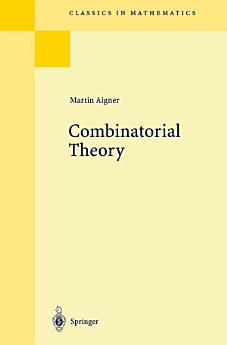Combinatorial Theory
এই ই-বুকের বিষয়ে
লেখক সম্পর্কে
Biography of Martin Aigner
Martin Aigner received his Ph.D. in Mathematics in 1965 from the University of Vienna. He then spent five years in the United States, the last two at the University of North Carolina at Chapel Hill where he was introduced to the combinatorial world (which he has never left since) by G. C. Rota and the late R. C. Bose. After extensive travels he returned to Europe and spent three years at the University of Tübingen with a senior fellowship of the German Science Foundation. Since 1974 he has been a Professor of Mathematics at the Free University of Berlin.
Martin Aigner has published in various fields of combinatorics and graph theory and is the author of several monographs on discrete mathematics, graph theory and the theory of search.






